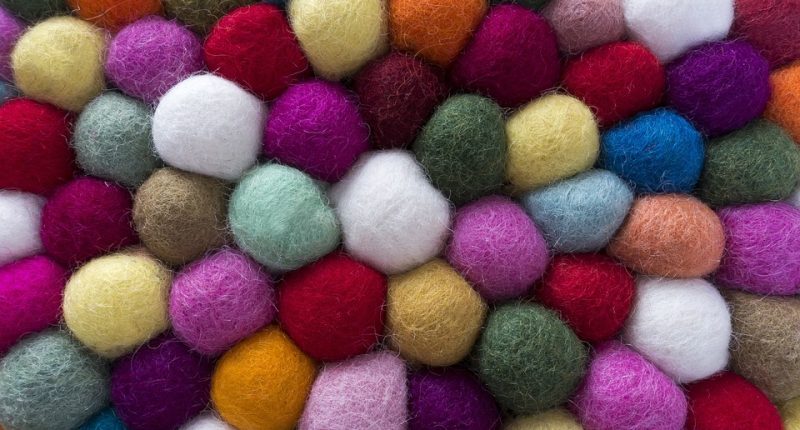The smallest unit of a textile material which has length greater than its diameter. A fiber is a spun with other fibers to form a yarn which can then be woven into fabrics. The transfer of fiber and the significance of fiber association are affected within by the length and type of fiber used, type of spinning method used. These aspects are very important when there is a possibility of transfer of fiber between victim and the suspect.
Most basic and important types of fibers on the basis of their origin.

- Natural fiber
- Manmade fiber
NATURAL FIBRE: natural fibers are prepared from plant, animal and mineral source. They are classified according to their origin.
- Plant fibers: the fibers that are originated from plant and vegetable sources are called as plant fibers. The main constituent of vegetables fibers is cellulose. The commonest and important plant fibers, in India are cotton, flax, hemp, jute and coir.
- Animal fiber: the fiber obtained from animals is called as animal fibre. These fibres are naturally made from fibrin protein. The frequently utilized animal fibres are wool, cashmere, mohair etc. Animal furs are also used as dress material.
MAN MADE FIBRE: those fibres which are made using various chemical treatments and are not derived from plants and animal sources are known as man-made fibres.
- Regenerated or derived fibres: it is a machine made fibre obtained by regenerated cellulose from cotton, wood and other suitable pant materials. The structure and properties of the cellulose fibres are modified in the regenerated fibers. So they are also known as modified fibres. They are manmade but their base is natural fibre mostly cotton, wood.
- Artificial or synthetic fibres: most of the fibers presently manufactures are produced solely from synthetic chemicals and are therefore classified as synthetic fibers. Some synthetic fibers are polyesters, polyvinyl, polyamides etc. there are about 25 varities.
- Mineral fibres: asbestos, glass fibers are most important mineral fibers. They are extensively utilized.
EXAMINATION OF FIBER
Fibres are termed as micro traces. Fibres are valuable evidence because of large variety and frequent exchange. It remains unnoticed and therefore culprit does not destroy it. The fiber examinations involve a comparison of samples from known and questioned sources to determine whether they are originated from the same source.
Physical examination: the fibers are examined visually with a hand magnifier and under stereo microscope. The study includes:
- Nature of fiber: fibers are varied in nature.
Natural fiber: This fiber originated from a plant source or animal source. Natural fiber is divided into plant and animal sources.
Man – made fiber: those fibers which are not derived from plants or animals and are made using various chemical treatments are known as man-made fibers. Regenerated, artificial fibres are the categories of manmade fibres.
2. Fiber color: one of the greatest variations seen in textiles is color. Individual fibers can be colored before spinning into yarns, yarns can be dyed after being spun or the fabric can be dyed before or after its construction. The absorbance of the dye along the fabric length gives the idea of dyes and dyeing method used.
3. Number of fibers: the number of fibers identified on the clothing of a victim associated to the clothing of a suspect is important in determining the actual contact. The greater the amount of fibers, the more likely that direct contact occurred between these individuals.
4. Fabric type: fabric construction affects the number and types of fibers that may be transferred.
- Tightly –woven or knitted fabric
- Loosely-knit or woven fabric
- Fabrics composed of filament yarns
- Fabric composed of spun yarns
5. Physical matches: a physical match occurs when two or more pieces of fabric or cordages can be reconstructed to prove they are previously one continuous piece of fabric or cordage. Photography is recommended method for physical matching record.
CHEMICAL EXAMINATION: the chemical properties of fibers comprises the effects of chemical agents including acids, bases, oxidizing agents, reducing agents and chemical changes induced within the fiber due to light and heat. Acids and bases cause hydrolytic attack of molecular chains within a fiber, while oxidizing and reducing agents will cause chemical attack of functional groups by oxidation or reduction.
MICROSCOPIC EXAMINATION: microscopy is the essential element in majority of aspects of the forensic examination and comparison of fibers. Thus, microscopic observation is employed to detect fibers, to characterize them and in most cases to differentiate them to suspect sources. Several types of light microscopes are used including stereo binocular comparison microscope, a compound microscope .http://modernforensic.in
THIN LAYER CHROMATOGRAPHIC EXAMINATION OF NON- REACTIVE DYES IN TEXTILE FIBERS
TLC is an inexpensive, simple technique can be used to complement the use of visible spectroscopy in comparison of fibers colorants. The principle of this method is that dye components get separated by differential migration caused by a mobile phase and a porous, absorptive medium.
INSTRUMENTAL EXAMINATION: we can use selective absorption of light by materials to characterize them. Light in visible, ultraviolet and infrared regions of electromagnetic spectrum is most useful for this purpose. The techniques such as IR spectroscopy, UV visible spectroscopy, nuclear magnetic resonance spectroscopy, thermal analysis etc..
Infrared spectroscopy: infrared spectroscopy is an important tool in determination of functional groups within a fiber. Functional group present in the polymer absorbs IR energy at wavelengths characteristics to that particular groups and thereby resulting in changes in vibrational modes within the functional groups. Thus functional groups in dyes and finishes can be detected by this technique. The Fourier transform infrared (FTIR) spectrometer has simplified the IR analysis of single fibers.
X –ray diffraction: X rays diffraction in crystalline or semi-crystalline polymeric materials will exhibit patterns associated to the crystalline and amorphous areas in the fiber. The shape and size of individual crystalline and amorphous sites in the fiber will revealed in the geometry and sharpness of the x ray diffraction pattern and will provide the internal structure of polymeric chain within a fiber.
Thermal analysis: thermal analysis is one of the more recent techniques used to monitor dimensional and weight changes in the sample as a function of temperature. The chemical and physical changes within fibers may be examined by measuring changes in certain properties as minor samples of fiber are heated at steady rate over a given temperature range in an inert atmosphere like nitrogen. The four thermal characterization methods are:
- Differential thermal analysis
- Differential scanning calorimetry
- Thermal gravimetric analysis
- thermal mechanical analysis
For more updates, subscirbe to our blog.








